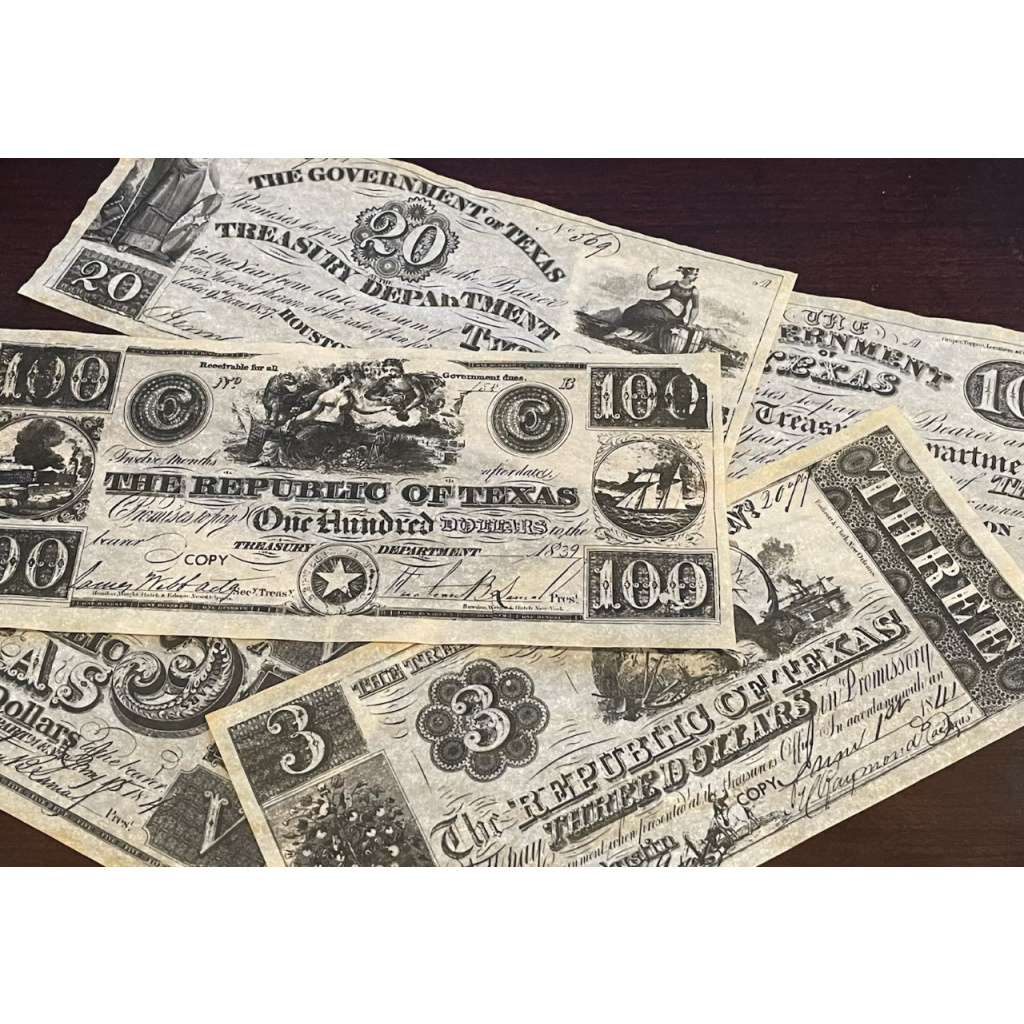While most people associate numismatics with coins, this also includes collecting historical paper currency. Collectors have been buying and selling all forms of old currencies, and it has become undeniable that investors have also turned collectibles into an alternative asset class that competes for some of the same money as stocks, bonds and real estate. One interesting facet within numismatics and United States history is that there are many paper notes and coins that date back to colonial times and date back to historic times which are before the the United States as we know it now.
Collectors Dashboard has monitored many transactions and recent developments with numismatics and other collectibles and one fascinating target within numismatics is collecting money from the Republic of Texas. This covers a very short period of time in history, and the pride mixed with the history of Texas seems to have a role in the prices of these notes.
It will take some quick skimming over history to get to the point, but Texas’ nationhood was limited to about a decade.
As Texans wanted to break away from Mexico, a free and independent Republic of Texas was officially declared in 1836. To put some dates into context, and to set the record straight for dating currencies and documents of the time, the massacre at the Alamo took place on March 6, 1836 after nearly two weeks of intermittent fighting. The Battle of San Jacinto was where the Texan army defeated the Mexican forces on April 21, 1836, and this is generally accepted as the end of Texas being part of Mexico.
Texas became the 28th U.S. state on December 29, 1845 and the formal government transfer under the United States took place on February 19, 1846.
Official notes for the Republic of Texas could have started in 1836, but the official printing of currency is recognized by the Texas State Library and Achieves Commission as 1837. The notes were referred to as star money because of the Lone Star image they all carried. The denominations issued were $1 $2, $5, $10, $20, $50, $100 and $500, but there is more — Texas also had a $3 bill.
The variations of notes and issuance over these short years can be found in the official Handbook of Texas from the Texas State Historical Association. This also pertains solely to the period as its own republic rather than when Texas was in the Confederacy during the Civil War.
When it comes to valuing collectibles as an alternative asset class, scarcity (supply) and demand are paramount. Today’s prices and values of old Texas currency reflect the limited quantity printed in the ten years the country existed. Numismatists have every reason to accept that there is some scarcity here, even if most original currencies had not been destroyed or lost in time. Only $4,095,990 worth of currency was the grand total ever created during Texas’ nationhood.
Most notes available for sale at the present time start close to the $400 price range (see below) and go up from there. Some sales have gone off at lower prices. The PMG money grading site shows prices that have been paid on various notes from the Treasurer of the Republic and also from the Consolidated Fund of Texas. PMG also links to eBay showing actual notes for sale and prospective buyers can access past recent sales under Sold or Completed searches within eBay.
Many Texas notes end up being framed in offices or homes. This is not an uncommon means of displaying currency, and the 1838 series of currency was only printed on one side. The website TheAntiquarium.com lists notes starting under $1,000 dollars and markets them in frames. Nicer examples proudly proclaim THE REPUBLIC OF TEXAS clearly for any visitor contrast the value of the 1839 red back style only, being worth just two-cents on the dollar by 1841 according to TexasBob.com.
Despite some rarity, it is still possible to find actual Texas bills from the period of 1837 to to 1845. An ungraded Republic of Texas $50 note from the 1840’s sold on eBay for $260.88 after 21 bids on April 1, 2021.
Collecting the Texas currency goes beyond many investments in collectibles, perhaps into pride and novelty. Having an established market price for these notes that have survived is also harder to determine as sale prices have varied greatly. It seems likely that many notes of Texas have been purchased under that sense of pride and novelty where the actual price paid is immaterial.
As long as there is a Texas there should be demand for any notes and currency from the Republic of Texas. That said, realized prices are likely to be quite unpredictable. Whether a same exact note will sell for hundreds of dollars more or less than the prior sale may depend on multiple issues which will likely be highly subjective at any point in time.

Categories: Coins & Money


